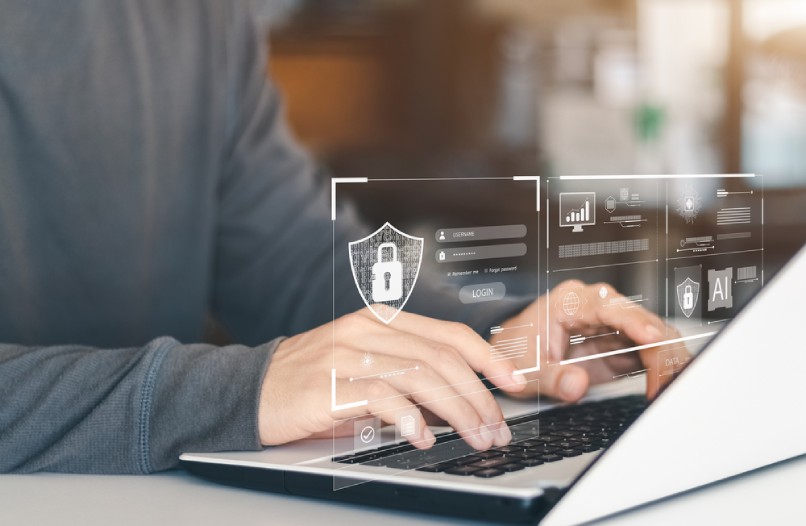
The digital landscape has expanded rapidly, and with it, the threats to digital security. Enterprise Resource Planning (ERP) systems, often at the heart of business operations, aren’t immune to these threats.
What is ERP in cyber security?
ERP cybersecurity is the protection of ERP systems from external and internal threats that can disrupt business processes.
Why ERP Cyber Security Matters
ERP systems streamline and integrate business processes to enhance productivity and decision-making in real time. An ERP cyber security breach in such a system can spell disaster for businesses, causing financial loss, brand damage, and potential legal issues. Protecting this vital system ensures the smooth functioning of business operations.
Common ERP Vulnerabilities
ERP compliance issues:
adhering to international and national data regulations can open doors for cyber attacks.
Outdated systems:
on-premise ERP systems might lack the security features present in newer models, making them prone to security breaches.
Misconfigured settings:
Incorrect configurations can expose business applications to threats.
Lack of patch management:
Not updating or patching the ERP system can lead to security vulnerabilities.
Types of ERP Systems and Their Security Concerns
SAP ERP Security:
As one of the most popular ERP systems, SAP must be safeguarded against threats like denial-of-service attacks and data leaks.
On-Premise ERP Systems:
These are ERP systems hosted on a company’s own servers. They require strong internal information security protocols.
Cloud ERP Security:
With data stored offsite, ensuring the hosting provider follows ERP security best practices is crucial.
Security Measures to Implement
Protecting your ERP system is paramount to ensuring that business operations run seamlessly, and confidential information remains secure. Here’s a deeper dive into essential security measures every business should consider:
#1. Patch Management:
- Overview: Every software, including your enterprise resource planning ERP system, can have vulnerabilities. Developers often release patches to fix these potential weaknesses.
- Action Step: Implement a regular update and patching routine. Make use of automated tools that can notify you of available updates, ensuring that you’re always using the most secure version of your software.
#2. Real-time Monitoring:
- Overview: In the digital realm, threats can emerge rapidly. Monitoring your system in real time helps detect unusual activities immediately.
- Action Step: Deploy monitoring solutions that offer instant notifications for suspicious activities. Immediate alerts can help in taking swift actions before minor issues turn into significant breaches.
#3. Backup Data:
- Overview: Data is the backbone of most businesses today. Ensuring its safety against potential data breaches, hardware failures, or human errors is crucial.
- Action Step: Schedule regular backups, both onsite and offsite. Consider using cloud solutions for redundancy and periodically test your backups to ensure they can be restored successfully.
#4. User Access Controls:
- Overview: Not every employee needs access to all parts of the ERP system. Limiting access based on roles reduces potential entry points for malicious actors.
- Action Step: Regularly review and update user permissions. Ensure that employees only have access to the parts of the ERP system necessary for their roles. When an employee’s role changes or they leave the company, update their access rights immediately.
#5. Firewalls and Intrusion Prevention Systems (IPS):
- Overview: These are your first line of defense against external threats trying to gain access.
- Action Step: Set up robust firewalls to filter out malicious traffic. Additionally, integrate an IPS to detect and prevent attacks in real-time.
#6. End-to-end Encryption:
- Overview: Encryption turns readable data into coded text, ensuring that even if data is intercepted, it remains unreadable to unauthorized individuals.
- Action Step: Ensure that data is encrypted not only when it’s stored but also during transmission. This is especially important for businesses that rely on remote access or have multiple locations.
#7. Regular Security Assessments:
- Overview: Periodic security assessments can identify potential vulnerabilities before they become genuine threats.
- Action Step: Collaborate with cybersecurity experts to conduct regular assessments. These experts can simulate cyber-attacks to test the robustness of your security measures and suggest improvements.
By proactively implementing and regularly updating these security measures, businesses can bolster their defense against evolving cyber threats, ensuring the integrity and reliability of their ERP systems.

ERP Security Best Practices
Consider these ERP security best practices:
- Training and Awareness: Ensure all users are aware of security best practices and know how to spot and report suspicious activities.
- Regular Audits: Regularly audit the ERP system to check for vulnerabilities and ensure ERP compliance.
- Use Strong Authentication Protocols: Multi-factor authentication or biometric verification can ensure that only authorized individuals gain access.
- Implement Firewalls and Encryption: These tools prevent cyber attacks from external sources.
Reducing Security Risks with Role-Based Access Controls
Role-based access controls (RBAC) are essential for cyber security ERP systems. By assigning permissions based on user roles, businesses can limit unauthorized access to sensitive information. Not every employee needs full system access, and restricting permissions reduces the risk of security vulnerabilities. For instance, administrators may access ERP software configurations, while employees only interact with the data necessary for their tasks.
Regularly reviewing and updating these controls ensures that access aligns with current roles, especially as employees change positions or leave the company. Implementing RBAC not only safeguards data but also strengthens overall system security.
The Importance of Security Audits in ERP Software
Regular security audits play a crucial role in identifying and mitigating vulnerabilities within your ERP software. Audits assess systems for security risks, unauthorized access points, and outdated protocols that may compromise sensitive information. By conducting comprehensive security audits, businesses can proactively uncover weaknesses and take corrective measures before they become major issues. These audits also help ensure compliance with data protection standards, further strengthening a secured ERP environment.
Safeguarding Sensitive Information with Cyber Security Measures
Sensitive information, like customer data, financial records, and proprietary business details, remains a prime target for cyber attackers. A secured ERP system incorporates robust encryption, firewalls, and real-time monitoring to defend against unauthorized access and security breaches.
Implementing multi-factor authentication (MFA) further enhances protection by ensuring that only authorized individuals can access critical data.
Combining advanced cyber security ERP measures with employee training and awareness reduces the risk of accidental leaks or malicious activity. By prioritizing these strategies, businesses can maintain data integrity, build trust with stakeholders, and ensure compliance with security standards.
Conclusion
In the modern business environment, ensuring ERP cyber security is not an option; it’s a necessity. As businesses become more integrated with technology, the threats they face increase.
However, with awareness, vigilance, and adhering to ERP security best practices, businesses can keep their operations running smoothly, safeguarding their data and reputation.
